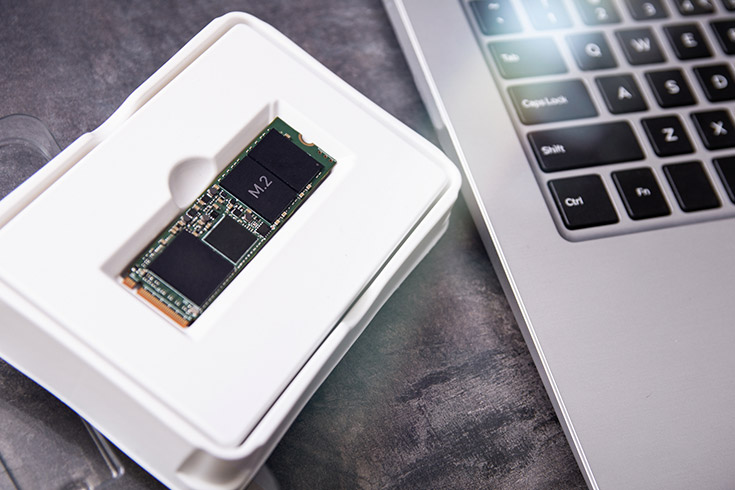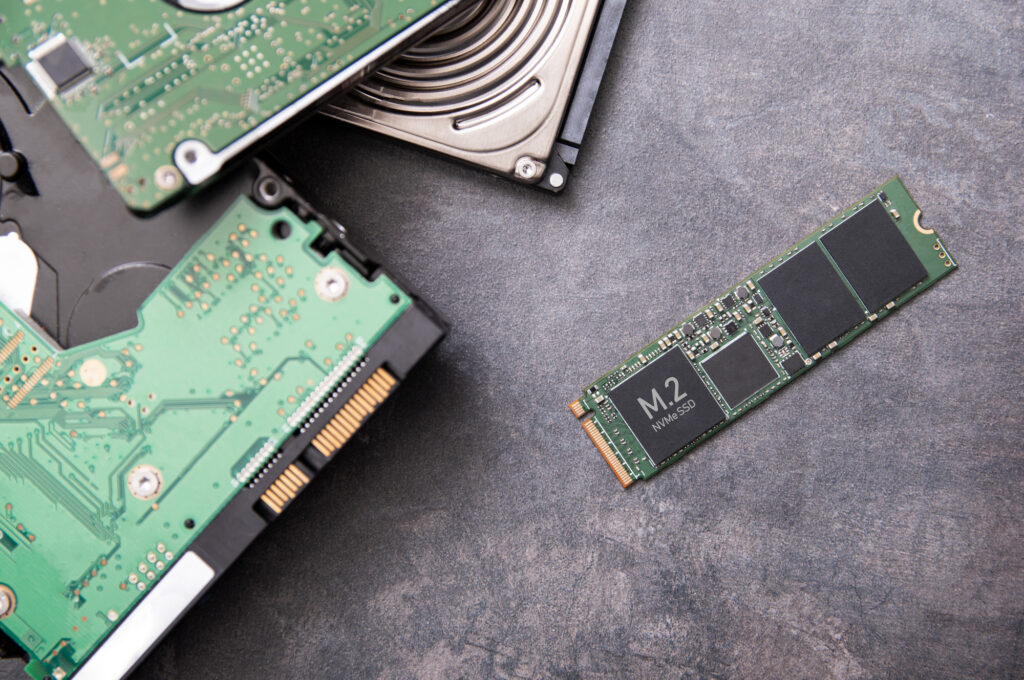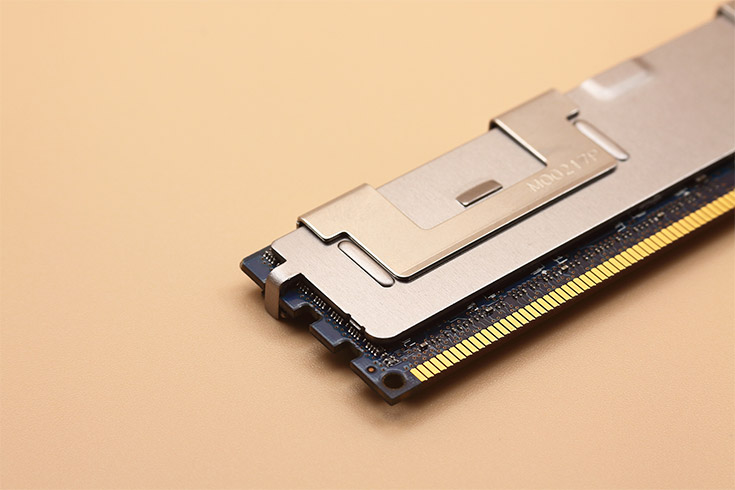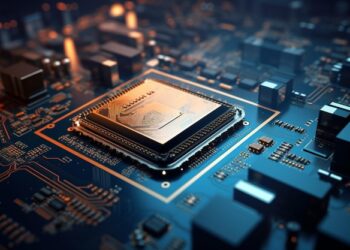Why NVMe Was Essential

For decades, storage technology relied on legacy interfaces and protocols designed for spinning magnetic platters. These older systems simply couldn’t handle the sheer speed and parallelism offered by modern flash memory.
A. Legacy Interface Limitations (SATA and AHCI):
- SATA (Serial ATA): This interface was developed for HDDs, which are inherently slow. Its maximum throughput of around 600 MB/s became a severe limitation as SSDs emerged, capable of much faster reads and writes.
- AHCI (Advanced Host Controller Interface): This protocol, also designed for HDDs, limited the number of commands that could be issued simultaneously (a single command queue with 32 commands deep). This serial nature was inefficient for flash memory’s parallel capabilities.
- High Latency: The overhead associated with these older protocols introduced significant latency, meaning delays between a command being issued and data being retrieved.
B. The Rise of Flash Memory:
- Solid State Drives (SSDs): When NAND flash memory became viable for storage, it offered massive performance advantages over HDDs: no moving parts, instant boot-up times, and significantly faster read/write speeds.
- Unleashed Potential: However, these early SSDs were still shackled by the limitations of SATA and AHCI. It was like putting a Ferrari engine into a car designed for a horse-drawn carriage; the engine couldn’t truly show its power. The industry desperately needed a new way for flash memory to communicate directly with the CPU.
C. PCIe: The Direct Pathway:
- Peripheral Component Interconnect Express (PCIe): This high-speed serial computer expansion bus directly connects components like graphics cards and network cards to the CPU, offering massive bandwidth and low latency.
- Bypassing Bottlenecks: The insight was to connect flash storage directly to the CPU via PCIe, bypassing the SATA/AHCI bottleneck entirely. This direct connection allowed flash memory to operate at its full potential.
The NVMe Protocol
NVMe is not a type of storage drive (like an SSD or HDD); it’s a communications protocol specifically designed for flash memory. It allows flash storage to operate at the speeds of the PCIe bus, exploiting the parallelism of modern CPUs and NAND flash.
A. Multiple Queues and Greater Depth:
- Up to 64,000 Command Queues: Unlike AHCI’s single queue, NVMe supports a staggering number of command queues.
- Up to 64,000 Commands Per Queue: Each of these queues can hold tens of thousands of commands simultaneously. This massive parallelism is akin to opening thousands of super-fast lanes on a highway, allowing data requests to flow freely and concurrently.
- Reduced Latency: This multi-queue architecture dramatically reduces latency by minimizing the time commands spend waiting in line.
B. Streamlined Command Set:
- Optimized for Flash: NVMe features a highly optimized and streamlined command set specifically designed for non-volatile memory. It removes the unnecessary overhead of commands tailored for spinning disks.
- Fewer CPU Cycles: This efficiency means the CPU spends fewer cycles processing storage commands, freeing up resources for other computational tasks.
C. Direct CPU Connection via PCIe:
- Bypassing the Host Bus Adapter (HBA): Older protocols required a host bus adapter to translate commands. NVMe allows the drive to communicate directly with the CPU’s PCIe lanes, minimizing layers of abstraction and boosting speed.
- Scalability: PCIe bandwidth is highly scalable. A single PCIe 4.0 x4 (4 lanes) NVMe SSD can deliver sequential read/write speeds of over 7,000 MB/s, far exceeding SATA’s limits. PCIe 5.0 and future generations push these limits even further.
D. Non-Volatile Memory (NVM):
- Data Persistence: “Non-Volatile” means the data remains even when power is turned off, which is a fundamental requirement for storage. This distinguishes it from volatile memory like RAM.
- Flash as the Medium: While NVMe is a protocol, its power is fully realized when paired with high-performance NAND flash memory. Future non-volatile memory technologies (like 3D XPoint, MRAM, or Resistive RAM) will also likely leverage the NVMe protocol.
How NVMe Drives Fit In
NVMe drives come in various physical forms, allowing them to be integrated into different computing environments.
A. M.2 Form Factor:
- Most Common for Consumers: This small, gum-stick-sized form factor is now the standard for consumer laptops and desktops. It plugs directly into an M.2 slot on the motherboard, often running on PCIe x4 lanes.
- Compact Design: Ideal for thin and light devices where space is at a premium.
B. AIC (Add-in Card) Form Factor:
- High Performance for Desktops/Servers: These are larger cards that plug into standard PCIe slots (e.g., PCIe x4, x8, or x16) on motherboards, similar to a graphics card.
- Larger Capacity & Cooling: They can accommodate more NAND flash chips and often feature robust heatsinks or active cooling, making them suitable for high-end workstations and servers.
C. U.2 Form Factor:
- Enterprise and Server Use: This form factor looks similar to a 2.5-inch SATA drive but uses a different connector designed for PCIe.
- Hot-Swappable: U.2 drives are hot-swappable, making them ideal for enterprise environments where drives need to be replaced without shutting down the system. They often allow for higher power delivery and better cooling than M.2 in server racks.
D. E1.S (EDSFF – Enterprise and Data Center SSD Form Factor):
- Next-Gen Data Center: This emerging family of form factors is designed specifically for hyperscale data centers. E1.S (short) and E1.L (long) are replacing the traditional 2.5-inch U.2 form factor in many new server designs.
- Optimized for Density and Cooling: They allow for greater storage density in a server chassis and are designed for optimal airflow and thermal management.
Where NVMe Storage Transforms Operations
The transformative power of NVMe extends far beyond faster boot times for personal computers. It’s fundamentally reshaping data-intensive operations across various sectors.
A. Enterprise and Data Centers:
- Cloud Powerhouse Evolves: Hyperscale cloud providers like AWS, Azure, and Google Cloud heavily rely on NVMe to deliver high-performance storage to their millions of customers, powering everything from databases to AI workloads.
- Virtualization Density: NVMe allows more virtual machines to operate efficiently on fewer physical servers due to significantly faster I/O operations, improving virtualization density and reducing infrastructure costs.
- Database Acceleration: Transactional databases (e.g., SQL, NoSQL) see massive performance gains, leading to faster queries, quicker data processing, and improved application responsiveness.
- Big Data Analytics: Processing enormous datasets for analytics, machine learning, and business intelligence becomes significantly faster, enabling real-time insights.
B. Artificial Intelligence (AI) and Machine Learning (ML):
- AI Server Demand Soars: AI training and inference require massive amounts of data to be fed to GPUs at incredibly high speeds. NVMe is essential here, preventing storage from becoming a bottleneck.
- Faster Model Training: Large AI models can be trained in significantly less time when data can be loaded quickly from NVMe storage.
- Real-time Inference: For applications like autonomous vehicles or facial recognition, where AI inference needs to happen in real-time, NVMe provides the necessary low latency access to data.
C. Gaming and Content Creation:
- Reduced Loading Times: Gamers experience near-instantaneous game loading, texture streaming, and level transitions.
- Seamless Workflow: For video editors, graphic designers, and 3D animators, NVMe drastically speeds up file transfers, rendering, and working with large project files, improving creative workflows.
- DirectStorage API: Technologies like Microsoft’s DirectStorage, which leverages NVMe to allow games to load assets directly to the GPU, further enhance performance by bypassing CPU bottlenecks.
D. Edge Computing:
- Edge Data Power Grows: As compute moves closer to the data source (e.g., smart factories, IoT devices, remote offices), NVMe provides the necessary high-speed, low-latency local storage.
- Real-time Processing at the Edge: Critical for applications like industrial automation, autonomous vehicles, and real-time sensor data analysis where decisions need to be made instantly without relying on a central cloud.
- Micro-Modular Data Centers: NVMe is key in these compact, often containerized, data centers deployed at the edge.
E. Financial Services:
- High-Frequency Trading: In financial markets, where microseconds matter, NVMe provides the speed for rapidly processing vast amounts of market data and executing trades.
- Fraud Detection: Real-time analytics for fraud detection relies on quickly accessing and analyzing transactional data.
The Future of Storage

NVMe is constantly evolving, with new developments promising even greater performance, efficiency, and broader adoption.
A. PCIe 5.0 and Beyond:
- Doubling Bandwidth: PCIe 5.0 doubles the bandwidth of PCIe 4.0, pushing sequential speeds for NVMe SSDs beyond 14,000 MB/s. PCIe 6.0 is already on the horizon, promising even more.
- New Architectures: These higher speeds will enable new system architectures, allowing components to communicate faster and opening doors for more complex workloads.
B. NVMe-oF (NVMe over Fabrics):
- Networked NVMe: This technology extends the NVMe protocol across network fabrics like Ethernet (using RDMA – Remote Direct Memory Access), Fibre Channel, or InfiniBand.
- Disaggregated Storage: It allows NVMe storage to be “disaggregated” from individual servers and pooled into shared, high-performance storage arrays that can be accessed by multiple servers with near-local latency. This is crucial for building next-generation software-defined data centers.
- Composable Infrastructure Emerges: NVMe-oF is a key enabler for composable infrastructure, where compute, storage, and networking resources can be dynamically provisioned and reconfigured on the fly.
C. Computational Storage:
- Processing at the Drive Level: This emerging concept involves embedding processing power directly into the NVMe drive. Instead of moving all data to the CPU for processing, certain tasks (e.g., encryption, compression, data filtering) can be performed directly on the drive.
- Reduced Data Movement: This significantly reduces the amount of data that needs to be moved between the storage and the CPU, saving bandwidth and improving efficiency, especially for large datasets.
D. Persistent Memory (PMem) and Storage Class Memory (SCM):
- Bridging Memory and Storage: Technologies like Intel Optane (based on 3D XPoint) blur the lines between RAM and storage, offering near-DRAM speed with non-volatility.
- Ultra-Low Latency: When combined with NVMe, PMem/SCM provides ultra-low latency access for applications that require extremely fast data manipulation, such as in-memory databases or real-time analytics.
E. Green Computing and Efficiency:
- Power Optimization: As data centers scale, the power consumption of storage becomes a critical concern. Future NVMe developments will focus on even greater power efficiency per terabyte.
- Cooling Solutions: Innovations in liquid cooling and efficient form factors (like E1.S) are becoming essential to manage the heat generated by increasingly dense NVMe deployments, contributing to Sustainable Data Growth.
F. Enhanced Security:
- Hardware-Level Encryption: Future NVMe drives will likely integrate more advanced hardware-level encryption and secure boot features to protect data at rest and in transit.
- Secure Enclaves Evolve: The concept of secure enclaves on drives will expand, protecting sensitive data from unauthorized access even at the storage level.
The Continued Revolution
The NVMe Storage Transforms narrative is far from over. Its continuous evolution promises to address new challenges and enable capabilities previously thought impossible.
A. Democratization of Performance:
- Broader Adoption: As NVMe technology matures and manufacturing scales, prices continue to fall, making high-performance storage accessible to a wider range of users and businesses, from small enterprises to remote offices.
- Every Device: We’ll see NVMe integrated into an even broader array of devices, from ultra-portable laptops to next-generation gaming consoles and sophisticated IoT devices.
B. Data-Centric Computing:
- Shifting Paradigm: NVMe is a key enabler of the shift towards data-centric computing, where data is seen as the central asset, and compute resources are brought closer to where the data resides.
- Real-time Everything: The ability to access and process data in real-time will become the standard expectation for all applications, driving innovation across every industry.
C. Cloud and On-Premise Synergy:
- Hybrid Cloud Optimizations: NVMe plays a crucial role in hybrid cloud architectures, ensuring seamless and high-performance data movement and synchronization between on-premise infrastructure and public clouds.
- Consistent Experience: It helps deliver a consistent performance experience whether data resides in the cloud or in a local data center.
Conclusion
NVMe Storage Transforms the very foundation of digital infrastructure. It has shattered the long-standing storage bottleneck, unleashing the full potential of flash memory and enabling a new era of high-speed, low-latency data access. From accelerating demanding AI Workload Demands in massive data centers to empowering Edge Data Power for real-time applications, NVMe is the essential backbone of the modern digital economy.
Its continuous evolution, through new PCIe generations, NVMe-oF, computational storage, and integration with persistent memory, promises to push the boundaries of performance and efficiency even further. As data volumes continue to explode and the demand for instant access grows, NVMe will remain at the forefront, driving innovation across every industry and ensuring that our digital future is built on speed, responsiveness, and unprecedented capability. The revolution isn’t just ongoing; it’s accelerating, ensuring NVMe Storage Transforms our digital world today and for many years to come.










